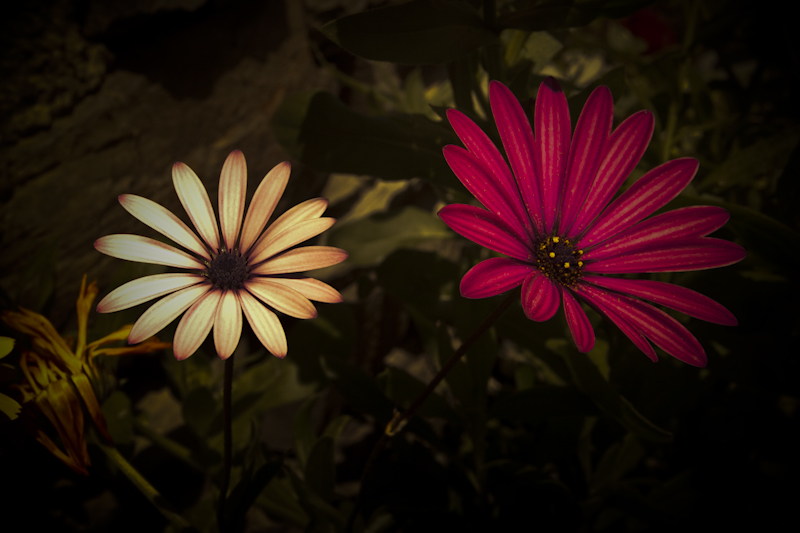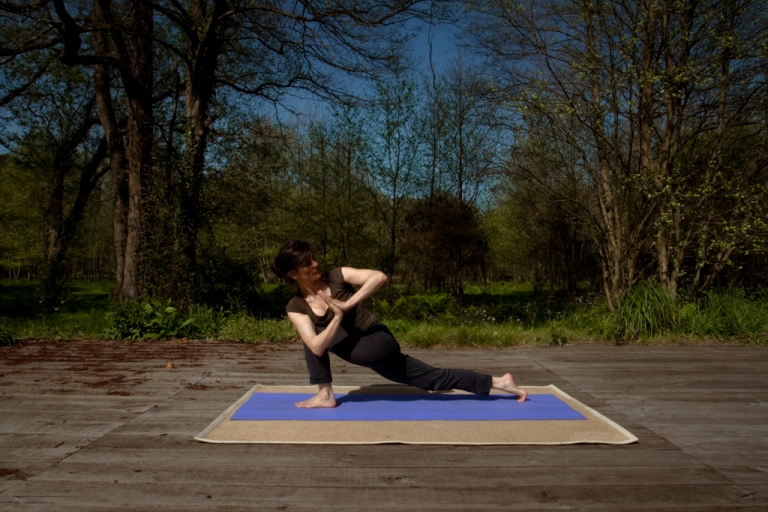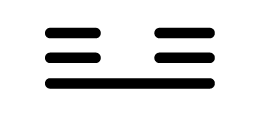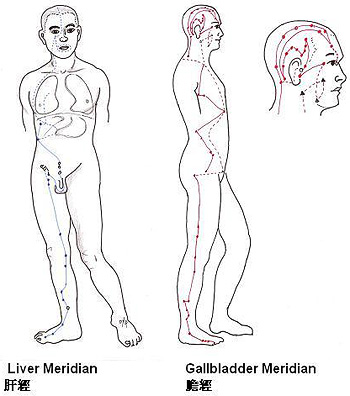Photos: Javi Otero
Spring
Element: Wood
Meridians: Liver & Gall Bladder
Emotion: Anger and taking decisions
Trigrams: Chen- The Arousing Thunder & Li -The Clinging Fire
Colour: Green
Organ: Eye
Chakra: Solar Plexus – Manipura
In Spring, after the long winter sleep, all the seeds that were hidden beneath the landscape of Winter wake up and start a new cycle. It is the time of rebirth: all of Nature becomes alive. Fields are filled with the beautiful colours of the wild flowers, trees start to blossom with the bright green of the early sprouts, days are longer and the sun heats and gives light to the very first day of all the creatures.
Rebirthing carries the idea of having been able to let dye that which is of no use any longer so that renewal can start. The new starts sprouting when we allow the old to end. Life is a dance of Yin and Yang, each giving way to one another and with their rhythmical increase and decrease all living things develop and grow. The energy of Mother Earth at this time of the year is represented by the Archetype of Kore, the playful young girl, independent and whole in herself. It is also Artemis, the warrior archer, Greek goddess of hunting and the moon who runs in the forests with a pack of wild dogs and nymphs. It is also represented by Brigid, the Celtic Goddess of inspiration, poetry and sacred fire. We celebrate the arrival of new possibilities and Life’s unpredictable nature.
The I Ching trigrams associated with Spring
The Arousing Thunder and the Clinging Fire are the natural forces more active in Spring according to the I Ching or Book of Changes. In Spring Yin•Yang Yoga transforms into a more dynamic and lively practice reflecting what is happening in Nature around us.
Chen- The Arousing Thunder
Sky Yang and Earth Yin had their first son, Chen, Thunder. Chen represents a young Yang with a mobilizing and generative energy. In Springtime Thunder awakens the seeds from their long winter’s sleep “When thunder and rain set in the seedpods of all plants, fruits and trees break open” (I Ching Hexagram 40, Deliverance). Thunder’s energy strongly bursts in to awaken us from a state of hibernation and with tremendous happiness and its marvelous mobilizing strength gets stagnant energy moving back again and brings all living things back to life. From the view point of our emotions, Thunder symbolizes the energy of anger which can break a state of prolonged and unsustainable stagnation:
“When thunder—electrical energy—comes rushing forth from the earth again, and the first thunderstorm refreshes nature, a prolonged state of tension is resolved. Joy and relief make themselves felt. The enthusiasm of the heart expresses itself involuntarily in a burst of song, in dance and rhythmic movement of the body.” I CHing Book of Changes, Hexagram 16 Yü, Enthusiasm“Thunder comes resounding out of the earth: The image of enthusiasm”. Our practice filled with Chen energy, so appropriate for these days, will contribute to helping our blood, liquids and energy circulate, promoting fluidity in movement, clearing off stagnation and generating heat. Chen reminds us that, as with everything else in Nature, we also sprout when we move a bit beyond complacency and by modeling its mobilizing energy we are invited to embody Life’s unpredictable nature.
Li- The Clinging Fire
In Springtime Fire is represented by the heat of the sun. Days are longer, sunrise is earlier, sunset is later and thanks to the heat and light of the sun all creatures start a new life. The I Ching calls Fire the Clinging so that we learn to see the interconnectedness of all things. Fire is a metaphor for interdependence as its existence depends upon the fuel that keeps it burning. As a metaphor for our inner states, Li coaches us to observe which fires we are feeding. Fire is also the representation of our inner light, the mental clarity that gives light so that we can see.
During our Yin•Yang Yoga Spring practice we generate energy to heat our bodies up. It is a powerful energy that utilizes combustion to generate power, strength and will. These are characteristics of the solar plexus Chakra, Manipura, which element is also Fire.
The Liver and Gall Bladder Meridians
In Traditional Chinese Medicine (TCM) there are two meridians which are specially associated with spring and that are most active at this time of the year: liver (Yin polarity) and gall bladder (Yang polarity). They belong to the Wood element of the Five Elements theory and respectively regulate anger and decision- making.
In TCM the liver has the following functions: it stores and distributes blood, regulates our emotional activities, it controls the drainage and dispersion of liquids and energy and it nourishes the tendons and ligaments so that our joints can move freely. The gall bladder is related to decision, courage, audacity, temerity, aggression, jealousy, envy and dissatisfaction.
The meridians function in an adequate manner when there is the appropriate amount of circulating energy or Qi but they generate discomfort when energy is deficient, excessive or stagnant. Each pathology (deficiency, excess, stagnation) produces specific symptomatology and in TCM healing is all about restoring the energetic balance.
Yin•Yang Yoga in Spring
With our regular Yin•Yang Yoga practice we prevent unbalances from appearing in the meridians as well as positively affecting the flow of energy and thus maintaining good health throughout the season.
The Wood meridians (liver and gall bladder) nourish the tendons and ligaments, which allow flexibility and mobility of the body. The Yin•Yang Yoga practice in Spring is intended to stretch and strengthen these meridians across the body, increasing the body’s flexibility and mobility with a regular and effortless practice. The gall bladder meridian goes down the sides of the torso and through the external side of the legs and the liver meridian travels up the internal side of the legs and up through the sides of the torso.
The Yin•Yang Yoga selected asanas will work primarily on the twisting, stretching and strengthening of these areas. The spinal twists help with detoxifying and stimulating the digestive system improving circulation. Twists generate heat and energy, and a practice based on twisting and stretching the sides of the torso (and not the hamstrings) will leaving you feeling lighter and radiant because you are not only detoxifying your body but also your mind from negative self-talk, resentment and anger which consume a good deal of your vital energy.
The practice of Yin•Yang Yoga turns dynamic and full of vitality in Spring. The practice starts a usual by quieting the mind through conscious breathing in padmasana (sitting meditation posture). Afterwards we warm the body up with a series of sun salutations (Sun Salutation A video link). Then we practice the Spring asanas also in a sequence, breathing deeply in and out without altering the flow of movement so that each breath becomes the vehicle that takes us from one posture to the next. This series’ postures are energizing and expansive reflecting the energy of the Arousing Thunder, the Clinging Fire and accessing the personal power and mastery located at the Manipura chakra. At this time of the year the hours of daylight are balanced and moving slowly and gradually towards summer’s Yang preponderance. Our practice reflects this natural shift of life by maintaining a soft rhythm and an effortless practice that moves slowly but steadfast towards Yang. In words of Lao Tze:
The Tao begot One.
One begot two.
Two begot three.
And three begot the ten thousand things.
The ten thousand things carry yin and embrace yang.
They achieve harmony by combining these forces.
People hate solitude
but the wise make use of it.
For one gains by loosing
and loses by gaining.
what others teach I also teach, that is:
“a violent person will die a violent death”.
This is the essence of my teaching”
Tao Te Ching verse 42
As you work on the sequence focus your attention on the stretching and twisting of the sides of your torso, instead of focusing on stretching your hamstrings. It is not important how far down you reach (stretch of your hamstrings) but rather how you twist your torso from the inside out, starting the movement at the base of the spine and expanding from there. It is not the shape of the posture but the feel of it that matters:
Tadasana, Hastasana, Uttanasana, balance on both legs, Virabhadrasana III (Warrior III), Virabhadrasana I (Warrior I), Virabhadrasana II (Warrior II), Parsva Virabhadrasana (The Warrior’s Bow), Trikonasana A y B (Triangle), Parsvakonasana A y B, Parivrtta Ashta Chandrasana, Utthan Pristhasana variación (Lizard), Prasarita Padottasana, Parsvottanasana, Vasisthasana (Lateral Plank), Phalakasana (Plank), Chaturanga Dandasana (Four-legged Stick), Urdhva Muhka Svanasana (Upward Facing Dog), Adho Muhka Svanasana (Downward Facing Dog), Uttanasana (Forward Leg Fold), Ardha Utanasana, Ardha Chandrasana, Ardha Uttanasana, Chaturanga Dandasana, Urdhva Muhka Svanasana, Adho Muhka Svanasana, Virabhadrasana I, Garudasana (Eagle), Samastitihi.
Once we have finished the Spring Sequence on both sides, we practice the closing sequence with asanas that activate the third eye chakra (Ajna, in between the eyebrows) and the awakening chakra (Sahasrara, on top of the head) with inverted postures over the shoulders, arms and hands (Halasana, Karnapidasana, Sarvangasana, the plough, the sail and Sirsasana A y B, Adho Mukha Vrksasana, Pincha Mayurasana, the headstand, handstand and forearm stand respectively).
The practice finishes off with a singing meditation to activate the communication chakra (Visuddha, at throat level).


















